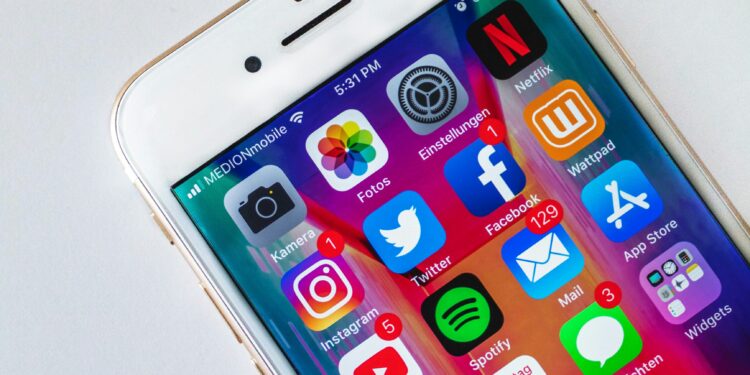The Algorithm Advises Rest and Lemon Water
In an environment of infinite scroll, where emotional resonance often outpaces scientific rigor, the average smartphone user now carries a device capable of amplifying misinformation at scale. TikTok and Instagram—once dismissed as frivolous entertainments for the terminally bored—have quietly become de facto primary care outlets for millions.
According to The Guardian, more than 30% of Gen Z now report using TikTok as a primary source of health advice, with a significant portion relying exclusively on user-generated content to make decisions about symptoms, treatments, and even medication use (source). Even more concerning, recent analyses show that 1 in 11 users have experienced adverse outcomes—ranging from delayed diagnoses to dangerous self-medication—due to health misinformation on social media platforms.
What once occurred in clinics, universities, or between pages of peer-reviewed journals is now happening in comment sections, short-form videos, and algorithm-curated feeds. The shift is not theoretical. It is clinical, material, and already reshaping the delivery and perception of healthcare across generational lines.
The Infrastructure of Misinformation
The issue is not merely that incorrect information exists online. It is how modern social media platforms are structured to disseminate it. TikTok, for example, utilizes a “For You” feed that prioritizes content based on viewer engagement metrics—likes, shares, comments, and view duration—not factual accuracy. This architecture incentivizes content that evokes strong emotional reactions, often at the expense of evidence.
A Pew Research Center report confirmed that medical topics like vaccine efficacy, mental health symptoms, and hormonal disorders regularly trend in TikTok’s top results, despite the content often lacking any form of professional verification (source). Instagram’s Reels function similarly, favoring rapid, visually engaging stories that conflate aesthetic appeal with informational reliability.
Researchers at the Royal College of Physicians in the United Kingdom argue that platforms function as “emotional accelerators,” escalating fringe ideas into viral “truths” when framed within the right visual and narrative form. Anecdotes about how seed cycling cured endometriosis, or how a liver cleanse reversed pre-diabetes, circulate with more traction than cautious summaries of current clinical guidelines. That discrepancy is not accidental. It is a structural feature of platform design.
When Symptom Checklists Go Viral
The propagation of self-diagnosis tools is especially pervasive. Gen Z users frequently engage with videos titled “10 Signs You Might Have ADHD” or “How I Knew It Was PCOS,” many of which present highly generalized or misleading information. These videos are rarely accompanied by qualifiers, evidence citations, or disclaimers.
The British Medical Journal recently published a meta-analysis on this phenomenon, revealing that a substantial portion of health-related TikToks misrepresented either the prevalence or the diagnostic criteria of complex medical conditions (source). Mental health content is a particular concern, with creators often conflating general emotional states with clinical disorders—such as equating temporary stress with generalized anxiety disorder, or sadness with major depressive episodes.
Notably, many of these videos are not created by trained professionals. They are the product of individuals seeking engagement, revenue, or social visibility. Several influencers also market their own supplements or “detox” programs, introducing direct financial conflicts of interest into content that many viewers interpret as health guidance.
The Clinical Repercussions
In recent surveys, physicians across the United States and Europe have reported an uptick in patients arriving with firmly held beliefs based on social media content. These patients are not simply misinformed; they are often resistant to contradictory evidence from medical professionals. This dynamic complicates the clinician-patient relationship, introduces delays in effective care, and burdens providers with the task of “debunking” rather than diagnosing.
At University College London Hospitals, physicians documented a case series in which three adolescent patients delayed necessary interventions for eating disorders after internalizing advice from TikTok creators promoting restrictive “gut-healing” protocols. One of those patients was hospitalized with electrolyte imbalance and significant cardiac risk. The attending physician described the case as “the direct result of algorithmically amplified misinformation.”
In the United States, emergency departments have encountered a similar pattern. The CDC issued a bulletin in early 2025 addressing an increase in self-inflicted injuries from “natural healing” TikTok trends, including at-home cryotherapy and excessive fasting.
A Failure of Gatekeeping and a Void in Oversight
Historically, public health messaging was filtered through institutions—universities, government agencies, credentialed experts. The arrival of social media disintermediated that structure. It democratized access to information but simultaneously collapsed the barriers that once guarded against pseudoscience.
Unlike traditional media, social platforms do not enforce uniform standards for health content. While TikTok has initiated partnerships with public health organizations, and Meta has pledged to improve content labeling, these initiatives are uneven and often cosmetic. As reported by TechCrunch, fewer than 25% of misleading medical videos on TikTok are removed or flagged before they accumulate more than 10,000 views (source).
The Federal Trade Commission and Food and Drug Administration are nominally empowered to regulate false health claims, but their enforcement remains slow and reactive, particularly when the offending content originates outside the United States. In the interim, platform-native misinformation continues to fill the vacuum left by absent oversight.
Solutions Rooted in Civic Responsibility
Addressing the health misinformation crisis on social media requires more than flagging individual videos or banning prominent offenders. It necessitates a broader reconsideration of how public trust is cultivated—and how digital environments are curated.
First, educational institutions must treat digital literacy not as an elective skill but as a core public health competency. Students should learn not only how to evaluate sources but how to understand the mechanisms by which information is surfaced and shared. Understanding an algorithm is now as essential as understanding a bibliography.
Second, healthcare institutions must proactively meet users where they are. Hospitals, clinics, and professional associations should invest in platform-appropriate content that explains diagnoses, treatments, and scientific evidence in ways that preserve integrity without forfeiting accessibility. Silence in digital space creates a vacuum that others are eager to exploit.
Third, platform companies must be held to higher standards—not just in removing false information, but in reshaping the incentive structures that elevate it. Algorithmic transparency, third-party audits, and co-regulatory oversight may offer a framework for change, though any such reforms will require political will unlikely to emerge without public pressure.
A Question of Credibility
At the core of this issue lies an epistemological challenge: Who do we trust to explain what is true, and on what basis? The proliferation of social media health content has revealed a crisis of confidence in traditional institutions—some of it warranted, much of it exacerbated by opportunists and entertainers who trade precision for performance.
But in the absence of new scaffolding for public trust, we risk surrendering medical discourse to the loudest voices and most emotionally charged narratives. That trade-off does not merely misinform. It actively harms.
The platforms are listening. The users are searching. What remains uncertain is whether anyone with authority is prepared to respond—comprehensively, transparently, and in time.















